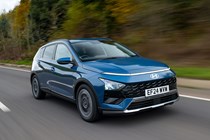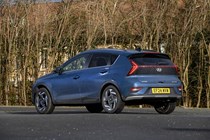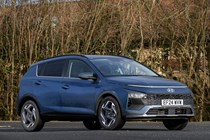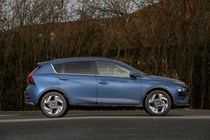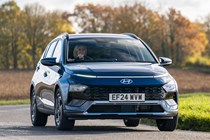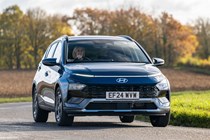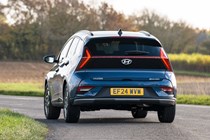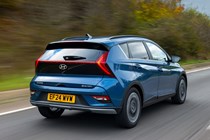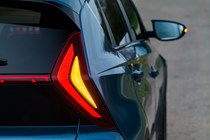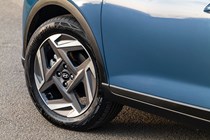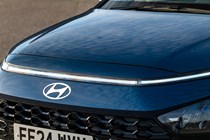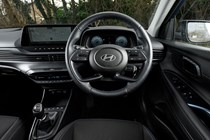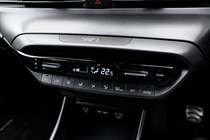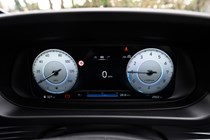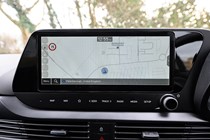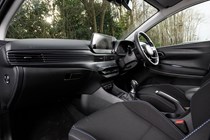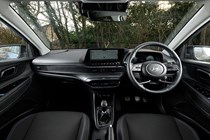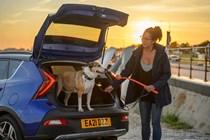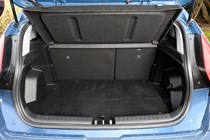
Hyundai Bayon boot space, practicality and safety
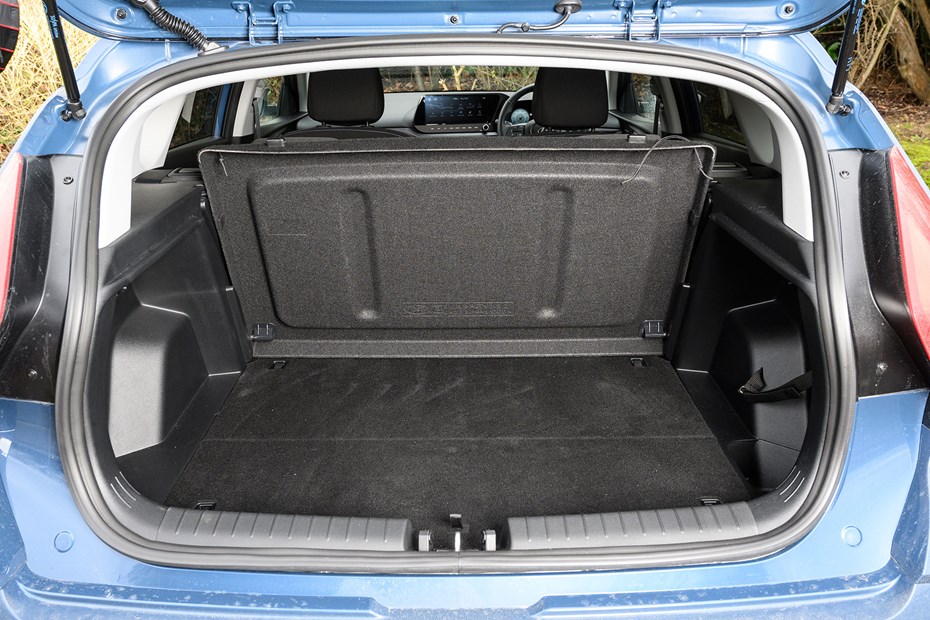
- More space inside than an i20
- Boot space is average for the class
- Plenty of safety equipment
How much space is there?
More than you get in a Hyundai i20 supermini, which is par for the course with this sort of car. Leg room in the back is a little more generous, and headroom is plentiful everywhere. It’s a bit tight to sit three abreast on the rear bench, but the same can be said of most cars in this class. The Puma isn’t that much better.
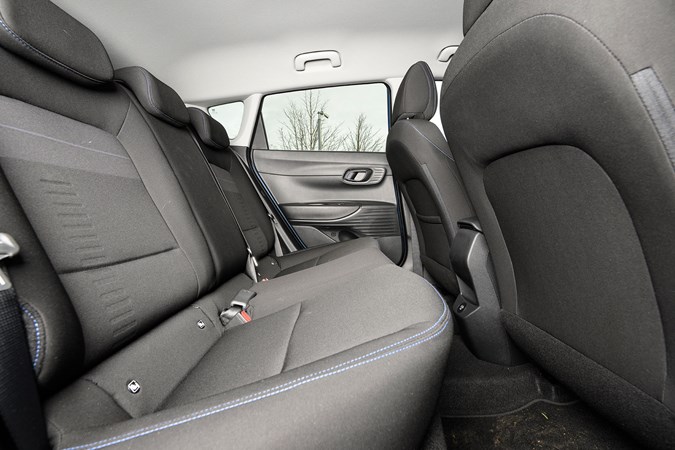
There’s ample space for people up front, but oddment storage is a more disappointing. The door pockets are only just big enough for litre-sized water bottles and, because they have quite low lips, you can’t store items like tablets in them without them falling out.
Boot space and storage
Hyundai has binned off the Bayon’s mild hybrid engines. That’s bad for fuel economy, but great for practicality because the battery for the mild hybrid system was mounted under the boot floor. As a result, boot space has increased from 334 to 411 litres. That’s only 45 litres behind the Puma.

You also get an adjustable height boot floor that can be used to either reduce the height of the loading lip or maximise boot space – and the parcel shelf has some very handy storage tangs, which means you don’t need to leave it at home when you’re transporting taller items. Hyundai also had the common sense to fit the Bayon with a black plastic rear bumper, which will be more resistant to scratches than a painted panel.
Is it easy to park?
Reasonably. That’s partly because, while the Bayon is marketed as a small SUV, its driving position is barely any taller than the i20’s, which means it no easier to see out of. However, the mid-range model’s standard front and rear parking sensors and rear parking camera compensate for that.
What’s more of a problem for the base model is the lack of rear visibility. The thick C-pillars and relatively narrow back window makes it difficult to judge where the rear corners are. At least the door mirrors are wide enough to help you see the alloys when you’re parking.
Safety
- Four-star Euro NCAP rating
- Safety kit isn’t as good as rivals
- Reasonably safe in a crash
Euro NCAP last crash tested the Bayon in 2021 – and it awarded the car a four-star safety rating. That’s the same as the Ford Puma and the updated Renault Captur, but not as good as the five-star Toyota C-HR and Volvo EX30.
The Hyundai loses out on occupant protection and safety tech. The child dummies were poorly protected in the side impact test – and the adult dummies in the front didn’t fare that much better, as the impact threw the driver a long way out of the seat.
Euro NCAP also wasn’t that impressed with the Bayon’s autonomous emergency braking system, as it struggled to react to other vehicles. At least Hyundai’s lane assist system isn’t too intrusive and, if you don’t like it, you can disengage it by long pressing a button on the steering wheel rather than digging through a catalogue of menus.
If you want a blind spot monitoring system, you’ll need to buy the range-topping Bayon Ultimate. Considering it costs around £1,000 less than the entry-level Ford Puma, though, we don’t think that’s as bad as it sounds.
Watch the Hyundai Bayon Euro NCAP crash test

Euro NCAP rating
| What is Euro NCAP? ⓘ | |
|---|---|
| Adult Occupant: | 76% |
| Child Occupant: | 82% |
| Vulnerable Road User: | 76% |
| Safety Assist: | 67% |
Equipment and options
- 3x3 point rear seat belts
- ABS
- Cloth seat trim
- Cruise control
- Driver`s airbag
- Electric mirrors
- Front electric windows
- Heated mirrors
- Parking sensors
- PAS
- Passenger`s airbag
- Rear electric windows
- Remote locking
- Roof rails
- Side airbags
- Air conditioning
- Sat Nav
- n/a
- Heated seats
- Sat Nav
- Air conditioning
- Alarm
- Audio remote
- Body coloured bumpers
- Climate control
- Height adjustable drivers seat
- Isofix child seat anchor points
- Steering wheel rake adjustment
- Steering wheel reach adjustment
- Telephone
- Air conditioning
- Alarm
- Audio remote
- Body coloured bumpers
- Height adjustable drivers seat
- Isofix child seat anchor points
- Steering wheel rake adjustment
- Steering wheel reach adjustment
- Telephone
- n/a
- Heated seats
- Sat Nav
- Air conditioning
- Alarm
- Audio remote
- Body coloured bumpers
- Climate control
- Electric sunroof
- Height adjustable drivers seat
- Isofix child seat anchor points
- Steering wheel rake adjustment
- Steering wheel reach adjustment
- Telephone
Dimensions
| Length | 4180mm |
|---|---|
| Width | 1775mm |
| Height | 1500mm |


